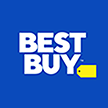There’s no denying it: link building is hard, especially for Ecommerce sites. It takes a unique approach to find the hard links and pull ahead of your competitors. That’s why we’ve compiled seven creative tactics for attracting and building links that don’t get mentioned all too often, but are very powerful.
Tactic #1 Go Quote Hunting
The idea behind this one is fairly simple. Start off with a simple list idea, but instead of brainstorming ideas to add to the list, start asking the experts.
One reason this idea is so powerful is the fact that you can work with an enormous number of influencers and you don’t need to ask very much from any of them. All you need to get out of them is a simple sentence or paragraph contribution to your list.
Outreach tends to be easier when you use this approach. Not only is their contribution small, but you’re asking them to promote themselves on your site, not the other way around. Do this with a large group of influencers and you’ve got yourself a recipe for attention and links.
Don’t get me wrong on this, though, it’s not a cakewalk. It takes much longer than creating your own list, and the outreach is by no means easy. Remember, most influencers do not think like SEOs, and giving them an opportunity to link back to their site isn’t going to get them excited. You need to make sure something is in it for them.
Don’t forget to ask them to promote the list once you get it published. Be tactful. Don’t push them. Just let them know it’s live, that you appreciated their help, and that you’d love it if they helped get the word out.
Tactic #2 “Instructographics”
I’m outright stealing this concept from Colby Almond because it’s made of solid gold encrusted in diamond.
Almond says that Pinterest, used properly, is like the old Digg on steroids. His uniquely tailored infographics, designed with Pinterest’s community in mind, bring in over a hundred thousand visitors each, with an average time on site over two minutes. Pinterest’s viral traffic also outlives the old Digg effect (and its modern equivalent, Reddit), sending significant traffic as long as four weeks.
The secret to making an infographic that Pinterest loves is to move away from data visualization and toward visual how-to guides, hence the name “instructographic.” In other words, Pinterest users are looking for something that’s visual and practically useful.
Sizing is also a crucial feature here. The graphic needs to be longer than 2,500 pixels in order to be illegible on Pinterest, which will entice them to click through. If it goes over 5,000 pixels, however, you should just use a 300?300 outline, or it will be so long that the pinners won’t bother going back up to the top and clicking “repin.” Almond claims the ideal image is 600?3000.
Another key element here is the need for originality. Pinterest is where homemakers go to get inspired. You need to lay an idea on them that will surprise them and peak their interest. If you start with a good idea and follow the rest of the steps, even a decent visual design can be enough to carry you to the “Popular” page on Pinterest.
Tactic #3 Blog Acquisition
There’s a very simple and totally ethical way to buy links: just buy natural links. How is it possible? Buy a blog that already has natural links.
Every corporate conglomerate understands that the surefire way to grow is to buy companies that are already succeeding. There’s no reason you can’t do the same with blogs. Just buy a reasonably popular blog, host it on your site, hire the blogger if you can, and redirect.
This isn’t just a great way to grow your link profile, it’s a tremendous way to grow your traffic, and fast. Invest in blogs that already have a loyal audience and you can more or less buy that loyalty, assuming you don’t meddle too much with its working formula.
There’s no reason to limit this to one blog. You can rinse and repeat as often as you like, as long as you do it in a way that’s justifiable as part of your marketing strategy, not just as an SEO tactic.
Tactic #4 Work with a Micro-Celebrity
SEOs have grown up in a culture where whoever writes the guest post is the “winner.” But you can turn this strategy on its head if you work with a micro-celebrity: that emerging middle class in the public mindshare.
To change your thinking on this, just who would benefit the most if Rand Fishkin wrote a guest post on your blog? Be honest.
Commissioning a micro-celebrity is another powerful way to buy natural links. Just pay them to write a guest post, take a photo, do a video blog, do whatever they do best, and post it on your site. Ask if they’d help promote it, and watch the traffic come flocking in.
Just what qualifies as a micro-celebrity is up to your own judgment, and it isn’t really the point. The point is that you can reverse your approach to guest posting. Use guest posts on your blog as a way of driving attention. Just hire people who have followers.
Tactic #5 Product Videos
Most Ecommerce sites have product images, but product videos can go a long way. We’re not saying that every product in your catalogue needs a television quality commercial attached to it, but a simple video explaining how to use the product, what its benefits are, or even just a slideshow can make your product pages that much more link-worthy. And if it’s not possible for all of your products, some is better than none.
The mere presence of a video already gives you an SEO benefit: a thumbnail in the search results. This draws attention to your page in the search results and leads to more clicks. In some cases, that thumbnail can send more traffic your way then even the top spot in the search results.
Tactic #6 Set up a Forum
Now that we’ve entered the social media age, everybody here understands the importance of community. Unfortunately, digital marketers often forget that a community on a social network isn’t quite theirs. When users interact with your brand on Facebook, they’re also distracted by posts from their friends and family. Facebook isn’t a place that people go to buy things.
A forum is great way transition that community onto your own web property. Forums give consumers a place to build a culture around your brand, one that will boost customer retention, and that you can learn from and use as a source of feedback. This is where you can discover your core fan base, really learn who they are, and use that as a leveraging point to pull in the mainstream.
To really give it legs, your forum will need some kind of unique selling proposition. Badges and karma points can go a long way toward bringing people back, but unless you’re doing something to stand out from other internet hangouts, it may not be enough.
These same principles also apply to wikis, meme generators, and other tools that you can offer your community. The more interactive and community-oriented your site becomes, the more links it will attract. User generated content is also a powerful source of long tail traffic, no extra charge, so take advantage of it.
Tactic #7 Gamify the Interface
We’ve been mentioning gamification a bit more often lately, and I think there’s a great deal of potential there. In some respects, gamification has already come and gone as a fad, in large part because of too much emphasis on points, rewards, badges, etc. that are really nothing more than an extension of company loyalty programs.
When we say gamify the interface, we’re not talking about creating “compulsion loops” the way Zynga did. Building a “game” around addiction instead of fun is a move that will only lead to user burnout in the long run (hence Zynga’s poor outlook).
For a good example of gamification done right, take a look at what M&M recently did on Facebook. No rewards points, badges, or contests. Just a “where’s Waldo” style game to find the hidden orange pretzel M&M. Over 20,000 likes.
We’re growing attached to the more helpful concept of “gameful design,” which places the focus on the intrinsic enjoyment that games bring, not the elevated “status” of empty points and badges, or rebranded versions of sweepstakes. Gameful design means designing interfaces that are intrinsically fun to use, rather than “addictive.”
Author: Pratik Dholakiya
Courtesy of www.searchenginejournal.com


















